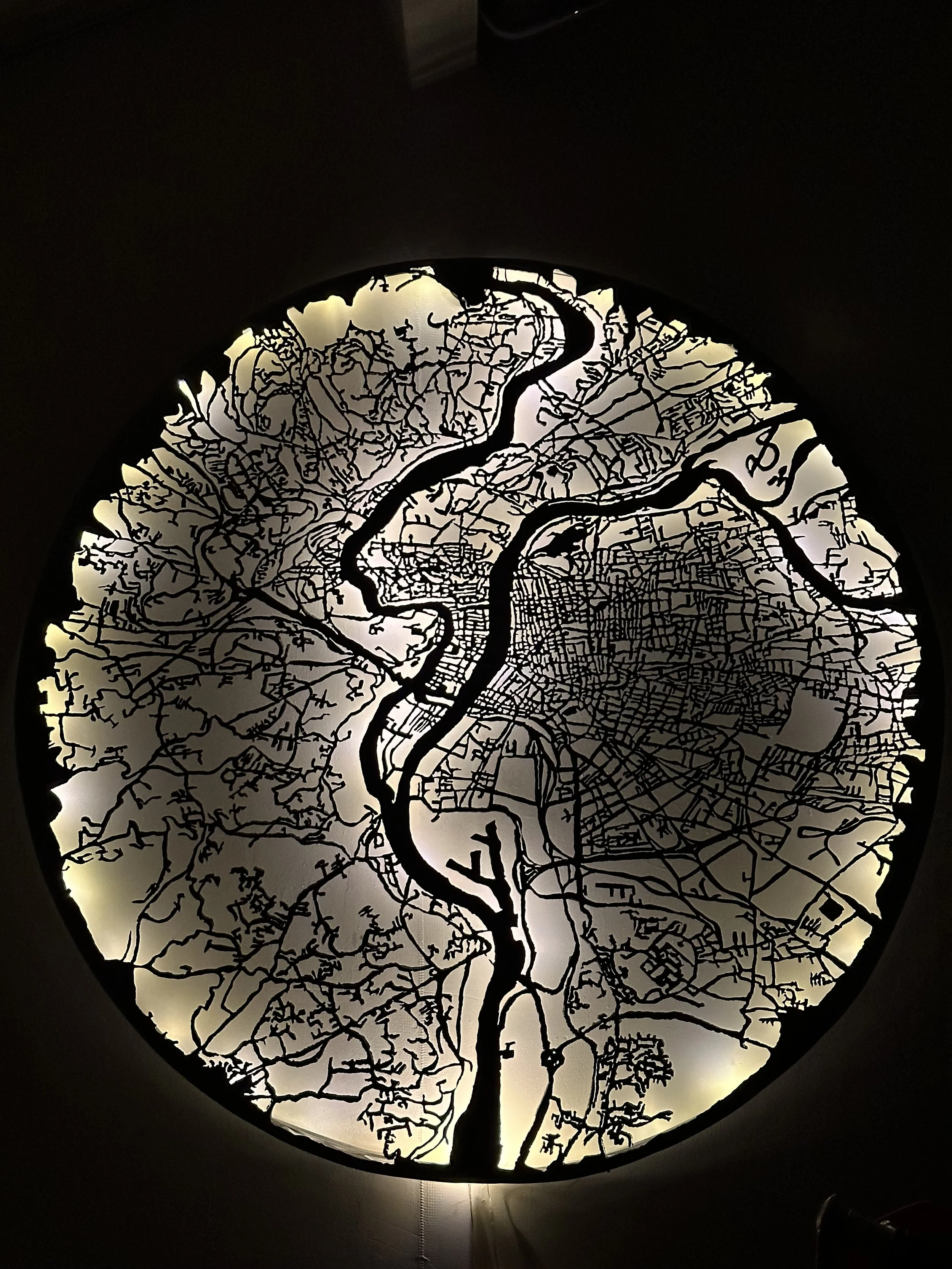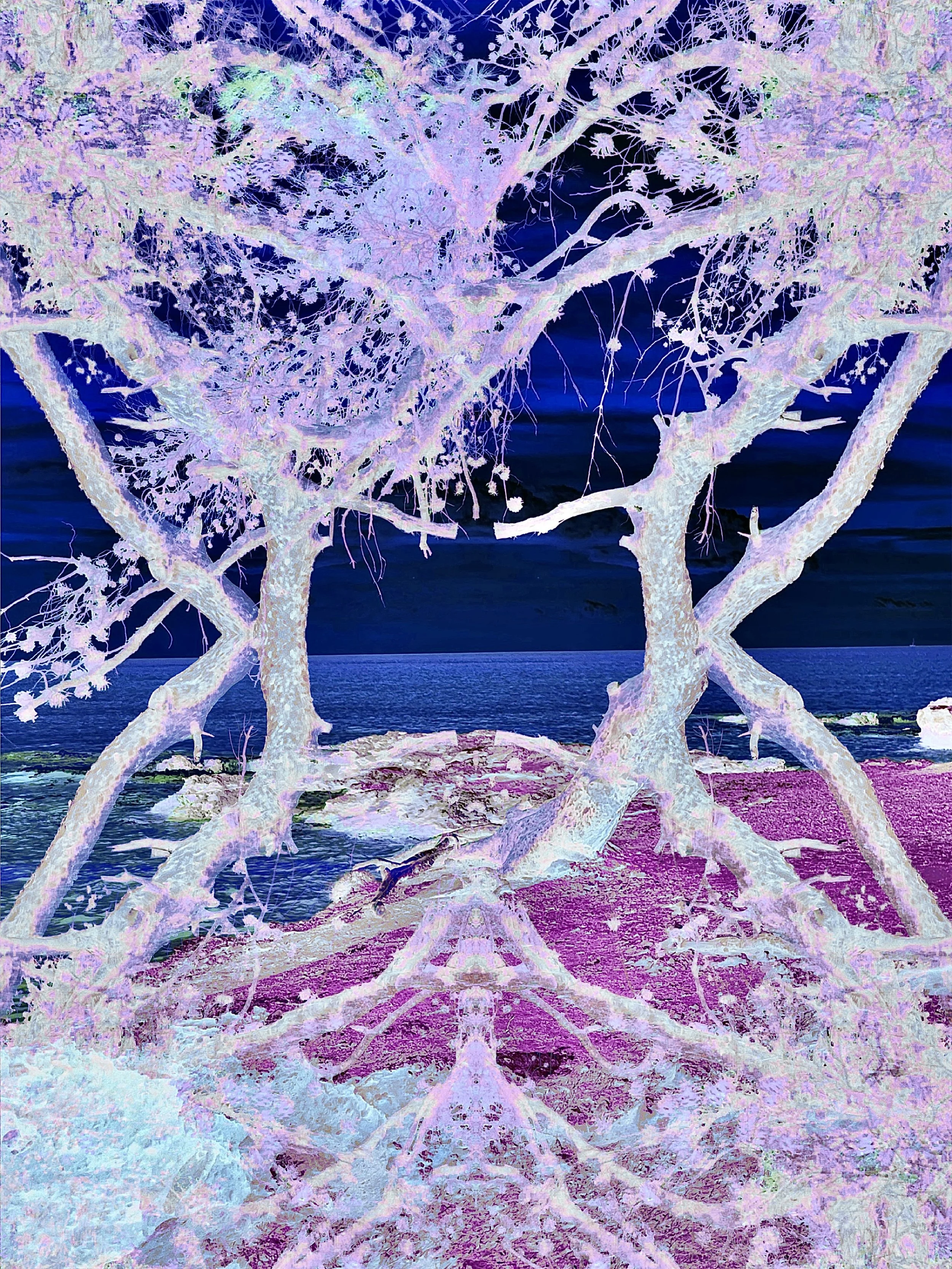Hugo Martínez Rapari
https://hugomartinezrapari.webnode.com.uy/
The art world thrives on the rare talent of individuals who challenge conventions and expand the boundaries of creative expression. Hugo Martínez Rapari, an award-winning Uruguayan artist, occupies a unique position in contemporary art as both a master of multidisciplinary approaches and a philosophical visionary. His works, deeply rooted in environmentalism, identity, and human survival, resonate across cultural and intellectual landscapes, firmly establishing him as a luminary whose contributions bear the weight of a new art canon.
Born in Montevideo in 1964, Martínez Rapari’s journey into art was shaped by an eclectic background. Graduating in Economics from the Uruguayan State University (UDELAR) and holding a Master’s degree in Renewable Energy, Environmental Management, and Marketing, his academic pursuits serve as the bedrock for his conceptual and technical sophistication. Since 2005, his formal training in art across renowned institutions, including the Museum of Modern Art in New York, the Museo de Arte Latinoamericano de Buenos Aires, and NODE Berlin, equipped him with the tools to create a truly avant-garde oeuvre. It is this intersection of science, personal memory, and artistic experimentation that defines Martínez Rapari’s enduring appeal.
Martínez Rapari’s UTOPIAN ORBS and its subsequent iterations, UTOPIAN ORBS OF SPACE: THE SYMBOLS and CHAPTER III: ATMOS, stand as monumental explorations of the human condition in the age of environmental crisis. The Orbs are visual and conceptual amalgamations of photography and digital art, fusing representational and abstract elements into harmonious complexity.
The works in these series depict imaginary habitats—utopian yet environmentally sustainable—that offer a blueprint for living amid the ravages of climate change. They are both hopeful and cautionary, imagining architectural structures as sanctuaries of ecological harmony. His pieces in these series often juxtapose vivid geometries with fluid movements, communicating dynamic tensions between human intervention and nature’s resilience. The art, in its meditative yet urgent tone, recalls the visionary architecture of Buckminster Fuller but extends into the metaphysical realm, suggesting that survival is not just a physical but a spiritual journey.
Martínez Rapari’s narrative deepens with CHAPTER IV: THE ROUTES, which charts humanity’s imagined escape into space—a reflection of our existential concerns about life’s fragility on Earth. These works, crafted with unparalleled precision, illustrate cosmic trajectories that evoke the surreal yet systematic explorations of the late 20th-century works of Robert Smithson. However, where Smithson’s explorations of entropy and decay are grounded in terrestrial landscapes, Martínez Rapari’s Routes are imbued with melancholic urgency and interstellar ambition. They are maps for survival, for relocating humanity in a universe that’s vast, indifferent, yet teeming with potential. Both artists share an acute awareness of humanity’s fragility but diverge in their focus—Smithson reflects on Earth’s eventual collapse, while Martínez Rapari envisions the possibility of rebirth among the stars.
In these series, Martínez Rapari demonstrates extraordinary technical ingenuity. By using digital techniques to recreate planetary orbits and space architectures, he brings scientific accuracy into his artistic realm. Yet, the works transcend mere engineering—they speak to the fragility of existence, inviting the viewer to meditate on the vast interconnectedness of life, environment, and human legacy.
In his SELF PORTRAIT: NAKED series, Martínez Rapari shifts focus from the cosmic to the personal, exploring themes of human identity and emotion. The series celebrates the human body not merely as a physical form but as an archetype, a vessel of vulnerability and power. The photographs, which include nudes and bodyscapes, are richly textured with light and shadow, creating works that seduce the viewer while posing existential questions.
This series, with its provocative exploration of nudity, echoes the classical tradition of Lucian Freud but moves beyond portraiture’s confines. The abstract compositions and emotional depth in NAKED suggest timelessness and connection, encouraging viewers to confront their own humanity. There is a profound spirituality in these works, a belief in truth and emotional resonance as transcendent qualities.
Martínez Rapari’s pen-and-ink series, Resilient Cities, offers another compelling facet of his practice. Through intricate drawings, he reimagines urban landscapes as fortresses of resilience against ecological and societal decay. These works demonstrate his mastery of detail and an unparalleled ability to synthesize the organic with the mechanical. The series critiques unchecked urban sprawl while celebrating the potential for human ingenuity to create sustainable spaces. Resilient Cities evoke the works of Piranesi, whose labyrinthine drawings of ruins serve as a metaphor for the impermanence of civilization. However, Martínez Rapari’s vision is less about decay and more about regeneration, offering hope amid entropy.
What sets Martínez Rapari apart in the contemporary art scene is his commitment to a holistic vision—one that embraces personal memory, societal structures, environmental imperatives, and cosmic philosophy. He is not merely an artist but a thinker, a storyteller, and a futurist whose works transcend aesthetic beauty to grapple with some of the most pressing questions of our time.
His ability to traverse media, from ink on paper to digital art and installations, showcases a versatility that is rare even among the most accomplished artists. His art possesses a seamless fusion of intuition and rigor, where every piece feels both deeply personal and universally resonant. It is no wonder that his works have been celebrated in prestigious galleries, from the Galería de Arte Braque in Buenos Aires to the Museo de las Américas in Miami, earning him awards like the Hecho Acá Prize and the Artavita Sculpture Prize.
If one were to draw historical parallels, Martínez Rapari’s practice aligns with the spirit of artists like Joseph Beuys. Like Beuys, who viewed art as a means to heal societal wounds, Martínez Rapari wields his work as a tool for ecological and cultural introspection. However, where Beuys grounded his practice in mythology and ritual, Martínez Rapari extends his gaze to the stars, framing survival as an interplanetary concern.
At the same time, his works hold echoes of contemporary pioneers like Olafur Eliasson, whose installations explore climate and perception. Yet, Martínez Rapari’s oeuvre is distinguished by its multidisciplinary depth and philosophical undercurrents, rooted in his unique life experiences and academic pursuits.
Martínez Rapari’s art is vital not just for its technical brilliance but for the questions it poses and the dialogues it sparks. In an era defined by environmental collapse, social fragmentation, and existential dread, his works remind us of the beauty of connection—to one another, to the Earth, and to the cosmos.
His contribution to the art market is significant, with his pieces occupying an enviable niche where intellectual rigor meets visual allure. His works are not only collectors’ treasures but cultural artifacts that will endure as testaments to a moment in history when art became a medium for envisioning survival.
Hugo Martínez Rapari is a force in contemporary art, a creator whose works illuminate, challenge, and inspire. His place in the art scene is not merely assured; it is monumental. Through his unparalleled talent and visionary outlook, he offers us a roadmap—both literal and metaphorical—for navigating the complexities of existence, ensuring his legacy as one of the great thinkers and artists of our time.
Martínez Rapari’s contribution transcends art as a discipline; his works act as philosophical meditations on the trajectory of humanity. His ability to synthesize themes of survival, identity, and ecological stewardship into compelling visual narratives is unparalleled. What makes his art truly transformative is its duality: simultaneously intimate and universal, fleeting and timeless. He speaks not only to contemporary anxieties but to the enduring human desire for transcendence and renewal. In a world grappling with existential challenges, Martínez Rapari’s art provides a clarion call for action and reflection. His legacy is not just as an artist but as a custodian of cultural and planetary consciousness, reminding us that creativity has the power to reimagine the future.
By Marta Puig
Editor Contemporary Art Curator Magazine
Resilient city II (Utopian Orbs Series), 2020. Ink on special paper, 29 x 29 cm.
Super block II (Utopian Orbs Series), 2020. Ink on special paper, 29 x 29 cm.
Activity center of the Universe V (UOS: the Symbols), 2022. Ink on special paper, 29 x 29 cm.
Public space of the Universe VIII (UOS: the Symbols), 2020. Ink on special paper, 2022.
Resilient city with reaction control engines I (Chaper III: Atmos Series), 2023. Ink on special paper, 29 x 29cm
Orbital maneuvering engines in the public space VIII (Chapter III: Atmos Series), 2023. Ink on special paper, 29 x 29 cm.
3461S5838W Buenos Aires (Chapter IV: the Routes Series), 2023. Ink on special paper, 29 x 29 cm.
5575N3762E Moscow (Chapter IV: the Routes Series), 2023. Ink on special paper, 29 x 29 cm.
Another star of transmutation (Naked Series), 2020. Ink on special paper, 29 x 29 cm.
Star of joy (Naked Series), 2020. Ink on special paper, 29 x 29 cm













